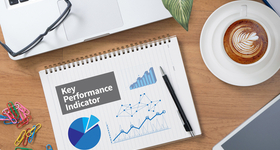Every month, the Marketing Manager blog compiles the marketing news, trends, and projections that will keep you on top of your game.
Setting The Tone
A recent study of marketing professionals reveals that 44% of them find rewriting copy to improve tone to be the most time-consuming aspect of the copywriting process. This is followed by tasks like proofing for spelling and grammar, rewriting for length, and translation. The study highlights the importance of clear tone-of-voice (TOV) guidelines, suggesting that many organizations may lack or have unclear TOV guidelines. To improve the copy development process and expedite content creation, recommendations include differentiating tone between channels, providing detailed best practice examples, showing examples of common mistakes, and testing and refining reworked content.
Outside The Inbox
A study by Customer.io called “The State of Messaging” reveals that marketers are increasingly relying on multi-channel campaigns, with email marketing being a central component but not the sole focus. In 2023, there was a 26% YoY increase in email volume, and 44% more brands used at least two channels for their campaigns. Combining email with other channels, such as push notifications and SMS, led to significantly higher conversion rates, demonstrating the effectiveness of multi-channel campaigns. Personalization is expected to be a key trend in 2024, with 73% of respondents planning to increase their efforts in this area. Behavioral triggers, dynamic content, and personalized email subject lines are cited as yielding high ROI in personalization strategies.
An Ad-Free Facebook?
Meta’s subscription service in the EU, offering an ad-free experience on Facebook and Instagram, has faced criticism and legal challenges. Austrian privacy rights group noyb filed a complaint, arguing that the subscription cost for safeguarding privacy is disproportionate, potentially leading to high costs for users. Speculation surrounds the potential impact on ad spending should such a model be adopted by other platforms, with influencers and omnichannel retailers potentially benefiting from a shift away from social media advertising. Publishers could also find opportunities in an ad-free social media environment, reaching audiences without clutter.
Social Spending
LinkedIn’s ad prices are on the rise, making it an attractive alternative for marketers considering moving away from other platforms like Meta. While LinkedIn ad costs have increased, marketers report substantial ROI, with some advertisers experiencing a 20% ROI. This comes as other platforms like Meta have faced declining ad rates. LinkedIn’s annual ad revenue is expected to grow by 14.1% in 2024, reflecting its continued appeal to advertisers.
Building The Brand
Sagefrog’s 2024 B2B Marketing Mix Report reveals that brand awareness is the top objective for businesses in the coming year. Marketing budgets are expected to increase for 48% of respondents, with in-person trade shows, direct marketing, content marketing, directories and sponsorships, and print ads being the top areas of marketing spend. AI adoption is also on the rise, with 31% of B2B marketers using AI for various purposes, including coding, chatbots, design, presentations, and content creation.
Hopes Are High
Despite concerns about economic recessions, 61% of marketers expect their business to improve in 2024, according to a WARC report. The report emphasizes the importance of maintaining or increasing investment in brand marketing during economic downturns. Increased investments are expected in online video, social media, mobile, and platforms like TikTok and YouTube. Ad spend is projected to grow 8.2% globally, surpassing $1 trillion for the first time.
Strategy Support
A study by Ascend2 finds that 66% of marketers use AI to some extent, with 17% not using it or planning to implement it. While challenges such as a lack of expertise, ethical concerns, budget constraints, data quality, and accessibility are cited, 76% of marketers consider their AI efforts to be successful. AI is primarily used for increasing efficiency, improving targeting, and automating repetitive tasks. Marketers measure AI success through ROI, customer satisfaction, and improved customer engagement. A significant percentage (77%) plan to increase their AI investments for marketing purposes in the next 12 months, indicating the growing importance of AI in marketing strategies.
Advertiser Optimism
Mediaocean’s 2024 Advertising Outlook Report indicates that marketers are gearing up for an active year ahead, with a focus on diversifying media channels. A significant percentage of respondents plan to increase their investments in various channels, including social platforms (69%), digital display/video (65%), connected TV (56%), and search (55%). The report highlights a renewed commitment to brand advertising, with 47% considering it a critical area of investment, up from 36% the previous year. This reflects increased confidence in the market as the global economy rebounds post-COVID. Challenges facing marketers in the new year include measuring campaign effectiveness on tech platforms, preparing for the cookieless future, and bridging the gap between creative and media execution. The report suggests that solving this gap will be the largest growth opportunity for brands in a year marked by data deprecation, antitrust regulation, and privacy protection.
Inbox Intrusion?
Marigold explored the challenges of personalization in advertising. It found that many consumers consider certain forms of personalization, such as ads following them across devices and ads related to conversations near smart devices, as “creepy.” However, reminders and recommendations based on past shopping behavior are generally well-received. The guide recommends focusing on zero-party data, which is data collected directly from consumers, to build direct relationships and personalize marketing efforts effectively. Gathering context from website visits, activity history, and point of sale data is also advised. Personalized email marketing is highlighted as an effective channel for delivering dynamic, personalized content.
Programmatic Tips For Publishers
Assertive Yield’s 2024 Publisher Trends report highlights challenges and opportunities in programmatic advertising. While trends like Google’s cookie phase-out and the push for sustainable advertising pose challenges, the programmatic advertising market is expected to grow at a compound annual rate of 12.5% globally through 2030. The report emphasizes the importance of high-quality traffic and explores various privacy-first solutions for publishers, including email hashing, first-party data, universal IDs, contextual targeting, and Google’s Privacy Sandbox. The report underscores the need for operational optimization and leveraging technology to maximize results with limited resources.
No Tough Customers
AI is becoming increasingly essential in marketing, with 99% of enterprise marketers finding it impactful in understanding customer preferences and behavior. Marketers are using AI for targeted advertising campaigns, personalized email marketing, customer support services, and customized product recommendations. The use of AI algorithms allows marketers to fine-tune messages in real-time, enhancing the connection between brands and their audiences. Looking ahead, marketers desire AI to help determine which customers are most likely to make a purchase and which channels are most likely to convert customers. Efficiency in time and budget allocation is a key motivation for adopting AI in marketing strategies.
Moving Targets
Adlook’s survey reveals that consumers are hesitant to share their email addresses for targeted ads, with 48% considering it undesirable. Privacy concerns, including issues with personally identifiable information (PII) and dummy accounts, contribute to this reluctance. The survey highlights the need for AI-driven identity-less advertising to respect consumer privacy preferences while enabling effective targeting. AI is seen as a solution for group-based targeting, providing a long-term approach to effective advertising without relying on cookies or personal data. Balancing effective targeting with privacy considerations is crucial for advertisers and tech companies in a changing landscape.
And One To Grow On
The U.S. Ad Market Tracker by Guideline’s Standard Media Index shows a 0.5% YoY gain in 2023, with December registering a 2.8% YoY growth, concluding nine months of consecutive expansion. Smaller ad categories experienced three times the growth rate of the top 10 categories. The shift toward programmatic advertising continues, with programmatic ads making up 90% of all digital display advertising in 2023. The tracker reveals the significance of ad categories ranked below the top 10, which have seen substantial growth over the years. Smaller ad categories have outpaced the growth of the top 10 categories in terms of ad spending.
Up For A Chat
A survey of U.K. professionals shows that advertising professionals are the highest users (39%) of ChatGPT, followed by legal (38%), arts and media (33%), IT (30%), and construction (30%). The most common uses for ChatGPT include writing reports, translations, research, and emails with clients. However, more than half of respondents don’t trust other businesses using ChatGPT and generative AI. Concerns include the subjectivity of legal clauses and the risk of sharing proprietary information. The survey emphasizes the importance of balancing effective use of technology with respecting privacy and data security concerns.
For more information about how to improve your email deliverability, download A Beginner’s Guide to Email Marketing by Mirabel’s Marketing Manager:
SEE FOR YOURSELF
Watch an overview to learn how B2B marketing automation by Mirabel Technologies can help you increase traffic, optimize your funnel, drive more leads, improve conversions, and boost ROI — at a price you can afford!


